The Cádiz dancer debuted “De la Concepción” at the Bienal de Sevilla, a work staged and directed musically by Eva Yerbabuena and Andrés Marín.
Silvia Cruz Lapeña
María Moreno has definitely got something. Something special, a spark. You can tell when she speaks using few words, prudent, dry, contrasting with what she transforms into when she dances. She did this last night, but very little, particularly in the soleá, breathtaking, brutal, but firm.
The show was called “De la Conception” whose program read: “My father wanted to be a bullfighter in the arena of sand and ended up being a sailor on the sea. All the ultrasounds predicted I was going to be a boy and I was born a girl”. It seemed she was going to deal with the distance between expectations and the way life finally turns out, but at times it wasn’t possible to understand the narration proposed by Andrés Marín and Eva Yerbabuena, authors of the story-line, the script and the musical direction of the Cádiz dancer’s second show on her own.
The work began in blackness, with faces illuminated in the midst of darkness, and screeching sounds like the soundtrack of a Hitchcock movie. In all this you could sense the hands of María’s maestros, and little input of her own. It’s normal to want to feel protected by your mentors in the process of making a work to be debuted at the Bienal, but there are things that can only be conceived first-hand.
Which is why it was so strange to hear the off-stage voice of Lole Montoya speaking about a phase of life, that of wrinkles, which the star of this work is nowhere near having. To that oddity was added the fact that the narrator made no use of pauses when reading, resulting in a text that was at times difficult to understand.
Also in her first work Moreno spoke of something personal, the death of her father, but at that time she dared to dance alone and with a group, and it was better. The work was called “Alas de Recuerdo” and was good enough in 2017 to be worthy of the Best Newcomer prize at the Festival de Jerez.
A magnificent soleá
At the Bienal de Sevilla, the Cádiz dancer needed more than a half-hour to get down to actually dancing, which gave the impression that she was being more of an actress than a flamenco dancer. It’s not incompatible, in fact it’s desirable that both facets combine, but there were more facial grimaces than body movement, and people had come to see flamenco dance.
The proof came upon hearing the audience’s reaction when Enrique el Extremeño appeared for soleá and María got down to dancing, ignoring the marks on the floor, the words, the lighting, everything, she let her hair down and became a volcano. What strength in those steps, so short and so definite, what natural gestures at the same time powerful, what art it takes to have that flexibility in the back, showing the waist artistically, not as gymnastics, what sparkle in the eyes, in the shoulders, the ends of her fingers. That was the María everyone wanted to see, the one able to tell the story of her life, and do it right. That’s the one who was energetically applauded at the Teatro Central which, it must be said, was full of professional buddies who possibly reacted generously to the soleá and the ending cantina more than to the work as a whole.
The ending was a good choice, because María, free of all that darkness and drama, gave back the flamenco motor of life, not just a tear-soaked hankie. “Dance, dance, dance!” shouted Extremeño becoming the voice of the entire audience who followed her hypnotically with heels raised and the plot thrown to the wind, as she continued to move, as if to say that the artist continues to be just that when the show ends.
The work wasn’t well-rounded, but the feeling was good. Not so much because of the story-line, nor the narration. It was because of María, who clearly has got something and whom we hope to see again soon taking care of the how.
Photos: Oscar Romero / La Bienal



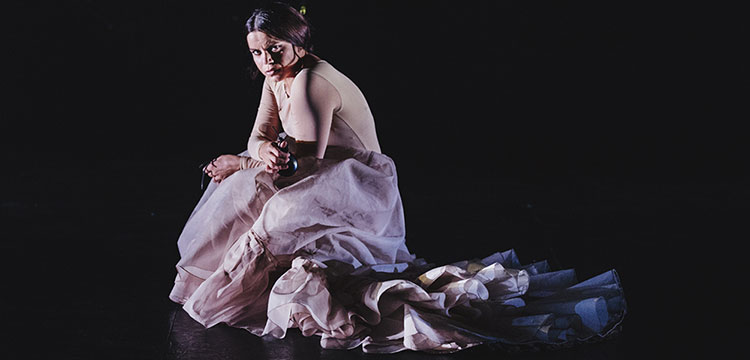



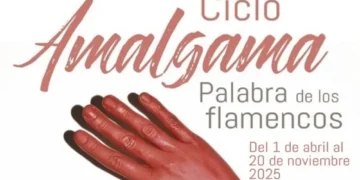
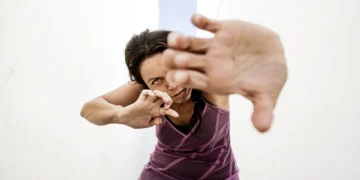

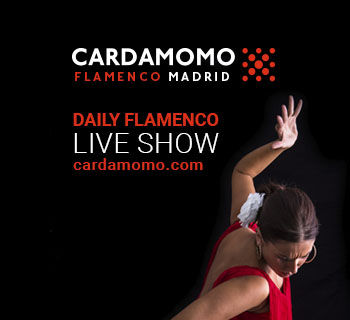
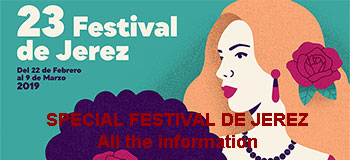
You must be logged in to post a comment.